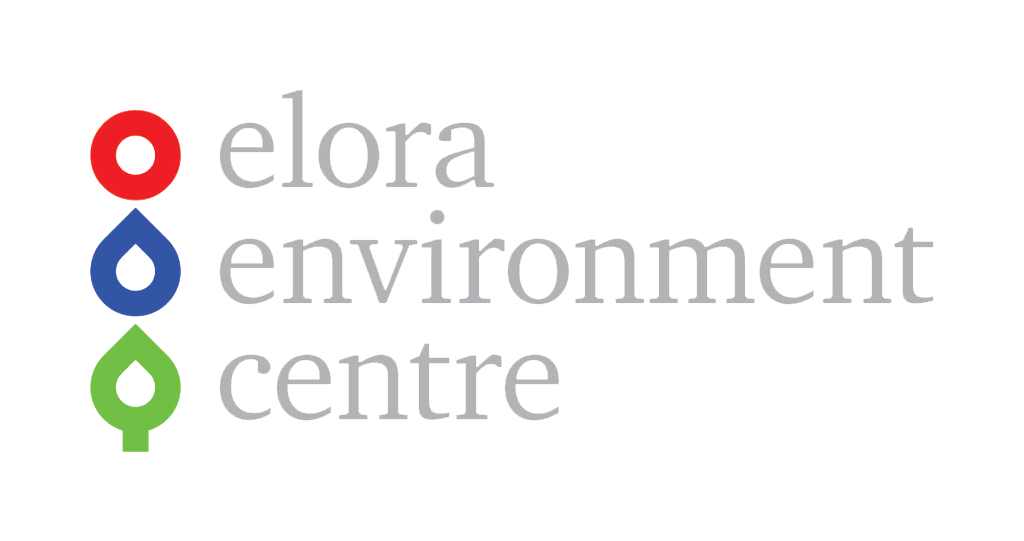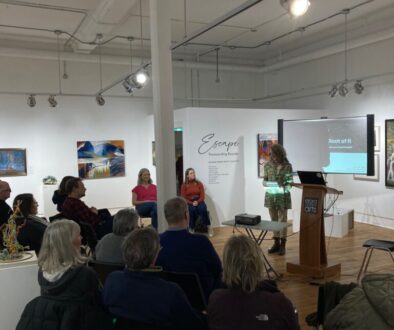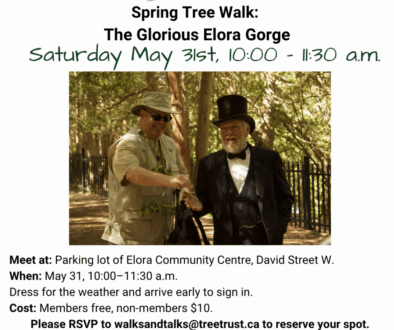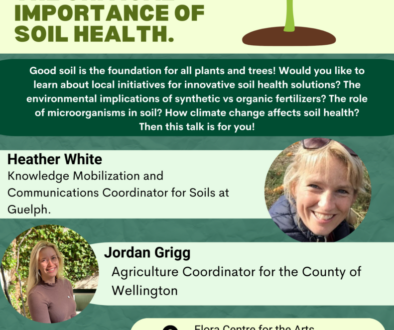Tree Talk: Oct 17, 2019, The Role of Fungi in Urban Forestry – Review
This fascinating talk was presented on Oct 17, 2019 by arborist Kyle McLoughlin.
Fungi are not plants – they belong to their own kingdom. In fact, they are more closely related to animals than plants. If you felt there was a lot to absorb at this talk, think about it this way: imagine you knew very little about plants, and a friendly and knowledgeable presenter gave you a 60 minute talk about the plant kingdom – there would be a lot to tell! The world of fungi is similarly complex, and Kyle was a veritable encyclopedia.
Here are a few of the main ideas Kyle covered:
- Never eat a mushroom unless you are 100% sure what it is!
- An arborist looks for fungi on and around a tree, as part of a tree risk assessment.
- If fungi are present on a tree, it indicates a situation that needs to be addressed. It doesn’t automatically mean the tree must be cut down; there are other options.
- Fungi, like any organism, are looking for a place to live, eat, and reproduce. The leaves, wood, and roots of trees are all suitable environments for fungi to grow.
- Some fungi (the mycorrhizal fungi) are beneficial to trees. They grow underground among tree roots, and enable the roots to take up naturally-occurring phosphorus from the soil, an essential nutrient. In return the fungi receive needed sugars from the tree roots.
- The loss of these underground fungal networks due to urban construction projects is a big loss to the trees. Adding artificial phosphorus fertilizer is a poor replacement. Preserving these symbiotic relationships between trees and fungi needs to be a priority.
- Other types of fungi can damage trees. Effects can range from the mild (leaf tar spots) to the serious (decay within the tree).
- Fungi get into the interior of trees via wounds to the tree, for example those caused by incorrect pruning, storm damage, or lawnmowers and weed-whackers.
- Trees don’t heal from wounds; they react by compartmentalizing, or sealing off the area. The tree creates a barrier zone to prevent the invading fungi from spreading.
- A tree’s environment affects its health and ability to defend itself against invading microorganisms. The urban environment is generally unhealthy, with nutrient-poor, compacted soil; air pollution; construction damage; root constriction; and proximity to buildings, roads, and other infrastructure.
- Some trees eventually fail due to accumulated defects, which causes risk to property and human safety. Our goal is to keep trees healthy and flourishing for as long as possible, to avoid damage or loss, and maximize the benefits they provide.
Some ways of reducing the risks posed by weakened trees include:
- Starting off right at the planting stage (right species suitable for conditions; in good soil; not too close to buildings, sidewalks, hydro wires, etc);
- Maintaining a variety of native species, of different ages, in the urban forest; mulching, watering, and pruning proactively; protection from construction damage (especially to roots); pruning off dead branches and reducing the weight of living branches.
Tree Walk
On the Saturday morning following the talk, Kyle took 17 of us on a hike to view a large variety of fungi in the forest. We were amazed at how much there was to see, and just how much there is to learn about the world of fungi.
Suggestions for further reading:
- Journal of Urban Forestry and Arboriculture http://joa.isa-arbor.com (scholarly publication)
- Tree risk assessment manual, geared toward interested community members – here is one example: https://www.fs.usda.gov/treesearch/pubs/11070
- Lone Pine Field Guide, Mushrooms of Ontario and Eastern Canada (may be out of print – check the library)
- Peterson Field Guide to Mushrooms, North America
- Timber Press Field Guide, Mushrooms of the Northeastern United States and Eastern Canada



